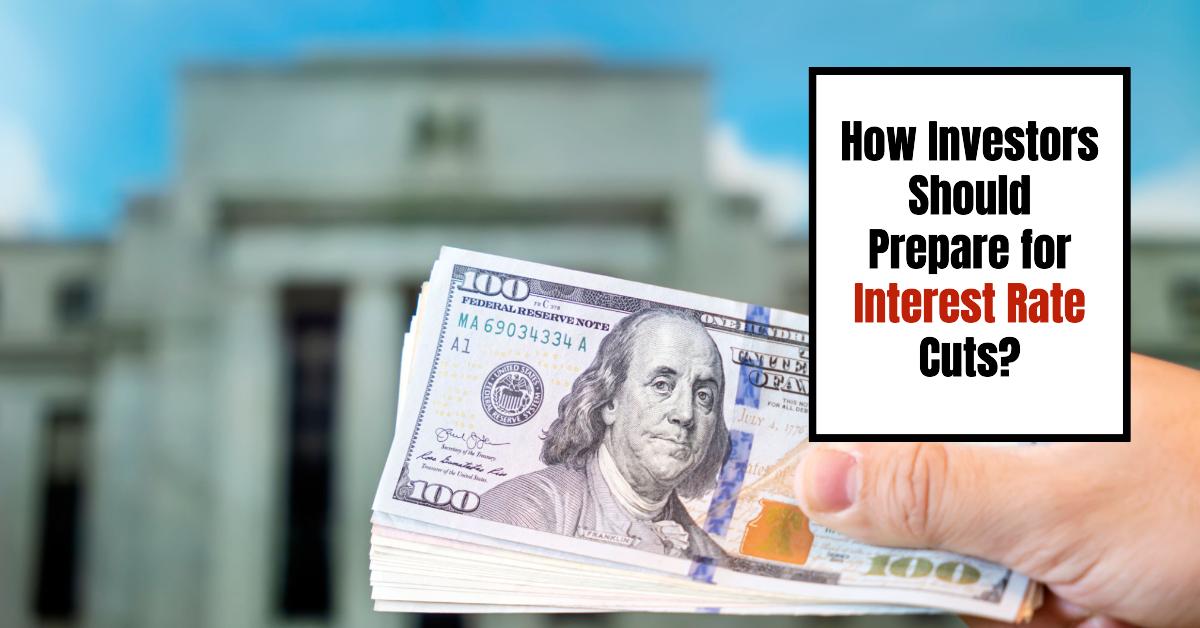When investors hear talk about potential rate cuts from the Federal Reserve, they should pay attention—just like you would when storm clouds gather. Market reactions to interest rate changes often shape how assets perform and can determine the momentum of an investment portfolio. Understanding the implications of these decisions and preparing thoughtfully is critical for investors looking to maintain and grow their wealth.
How Investors Should Prepare for Potential Interest Rate Cuts?
Key Takeaways
- Interest Rates Matter: Rate cuts can stimulate economic growth but may also signal concerns about economic stability.
- Sector Sensitivity: Some sectors like utilities and real estate tend to gain from lower rates, while financials might face challenges.
- Historical Context: Analyzing previous market responses helps inform investor strategies in anticipation of new rate cuts.
- Diversification is Key: Protecting your portfolio from volatility is best achieved through diversification across sectors and asset types.
The Role of the Federal Reserve
The Federal Reserve (Fed) plays a vital role in the economy by managing the nation's monetary policy, primarily through adjustments to interest rates. When the Fed cuts rates, it aims to lower borrowing costs, thereby fueling economic activity by encouraging spending and investment. However, the broader implications of these cuts can vary significantly across sectors.
Impact of Rate Cuts on Various Sectors
- Utilities: This sector usually thrives during periods of declining interest rates. Utilities are often seen as stable income generators, often paying dividends that attract investors seeking yield. Lower rates can enhance the appeal of these stocks, driving up their prices as more investors flock to safe-haven investments.
- Real Estate: Real estate values tend to rise when interest rates drop. The cost of mortgages typically decreases, making home purchases more affordable. Additionally, Real Estate Investment Trusts (REITs) can benefit from cheaper financing for new acquisitions and developments, potentially leading to an uptick in stock prices in this sector.
- Financials: Banks and other financial institutions generally face headwinds when rates are cut. Lower interest margins mean that the difference between what they lend and what they pay savers shrinks, eroding profit margins. However, if a rate cut leads to an economic rebound, the sector may eventually benefit from increased lending activity.
- Consumer Discretionary: In a low-rate environment, consumers are likely to spend more because they can borrow at reduced costs. Sectors such as retail, automotive, and travel often see increased activity, as consumers take advantage of cheaper loans for homes and cars.
- Technology: Companies in the technology sector, particularly those involved in innovative sectors, tend to flourish in lower interest rate environments. These firms often rely on cheap capital for expansion and development, making them attractive investment options during periods of rate cuts.
Analyzing Historical Trends of Market Reactions
Understanding historical market reactions to rate cuts can reveal valuable insights for investors. For example:
- Post-2008 Financial Crisis: After the Fed cut rates during the crisis, stock markets initially fell due to widespread fear. However, sectors like technology and consumer discretionary eventually flourished, driven by low borrowing costs and increased consumer spending.
- COVID-19 Pandemic Response: The Fed's aggressive rate cuts in response to the pandemic caused a rapid growth in technology and e-commerce stocks as businesses pivoted to digital platforms. Conversely, traditional sectors like hospitality and travel faced severe downturns before beginning their recovery.
These historical insights emphasize the importance of strategic thinking when it comes to Market Reactions and potential rate cuts, allowing investors to adjust their portfolios accordingly.
The Importance of Diversification
In light of potential rate cuts, one principle stands out: diversification is vital. Spreading investments across various sectors protects against the volatility commonly triggered by rate changes. Here are a few ways to diversify effectively:
- Bond Funds: These can offer stability when interest rates are falling, as bond prices generally increase in such environments.
- Global Investments: Investing in international equities can balance risks associated with U.S. economic fluctuations.
- Defensive Stocks: Companies in consumer staples, which provide essential goods, tend to be less volatile during economic downturns, making them attractive in uncertain times.
Investment Strategies in a Low-Rate Environment
As interest rates shift, investors may need to revisit their strategies. Here are some considerations:
- Review Asset Allocation: Conduct a thorough review of current asset distribution across sectors. Adjust allocations to enhance exposure to potential beneficiaries of lower rates.
- Look for Growth Opportunities: Focus on sectors poised for growth in a low-rate environment, such as technology and consumer discretionary, where consumers may increase spending.
- Emphasize Quality: Seek out companies with strong fundamentals, such as solid earnings, low debt levels, and consistent cash flow, as they are more likely to thrive regardless of economic conditions.
- Engage with Fixed Income: In times of low rates, fixed income investments remain important. Look for opportunities in municipal bonds or high-quality corporate bonds.
- Stay Informed: Keep track of economic indicators, Fed announcements, and overall market trends. This will help you anticipate adjustments that might benefit or challenge your investments.
Partner with Norada, Your Trusted Source for Turnkey Investment Properties
Discover high-quality, ready-to-rent properties designed to deliver consistent returns. Contact us today to expand your real estate portfolio with confidence.
Investor Sentiment and Market Behavior
Understanding investor sentiment plays a crucial role in deciphering Market Reactions during rate changes. Emotional responses can lead to sudden shifts in market trends, where panic selling or exuberance can amplify volatility.
Behavioral finance highlights the tendency for investors to react emotionally to news rather than logically. This can create opportunities for disciplined investors who remain grounded in their strategic plans. By resisting the urge to make knee-jerk reactions during economic uncertainty, investors can weather the storm and seize opportunities.
My Opinion
As we look ahead to potential rate cuts, several sectors exhibit promising prospects, especially utilities and real estate. However, financial institutions may continue to face challenges if rates drop. Keeping a close eye on consumer sentiment and sector performance will be essential.
Conclusion
While discussions of potential rate cuts can create uncertainty, they also present opportunities for savvy investors. By understanding the historical context, assessing sector impacts, and revisiting investment strategies, you can better position your portfolio for future success. As you navigate these changes, remember the importance of diversification and informed decision-making in mitigating risks associated with market fluctuations.
Also Read:
- How Low Will Interest Rates Go in 2024?
- Interest Rate Predictions for the Next 3 Years: (2024-2026)
- Interest Rate Predictions for Next 2 Years: Expert Forecast
- Interest Rate Predictions for Next 10 Years: Long-Term Outlook
- When is the Next Fed Meeting on Interest Rates in 2024?
- Interest Rate Cuts: Citi vs. JP Morgan – Who is Right on Predictions?
- More Predictions Point Towards Higher for Longer Interest Rates



